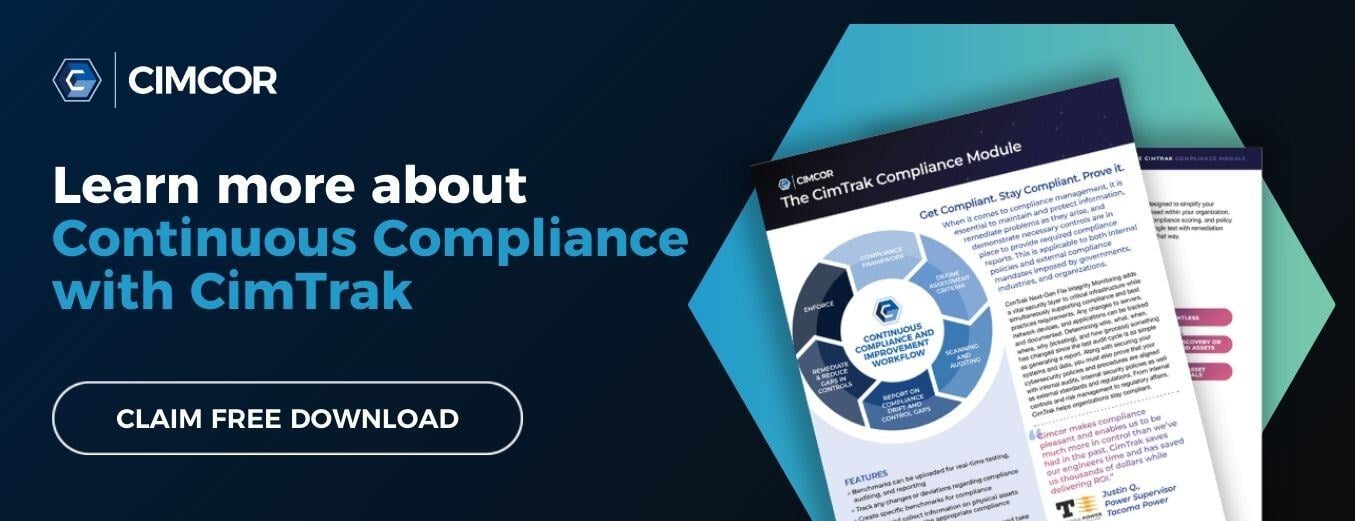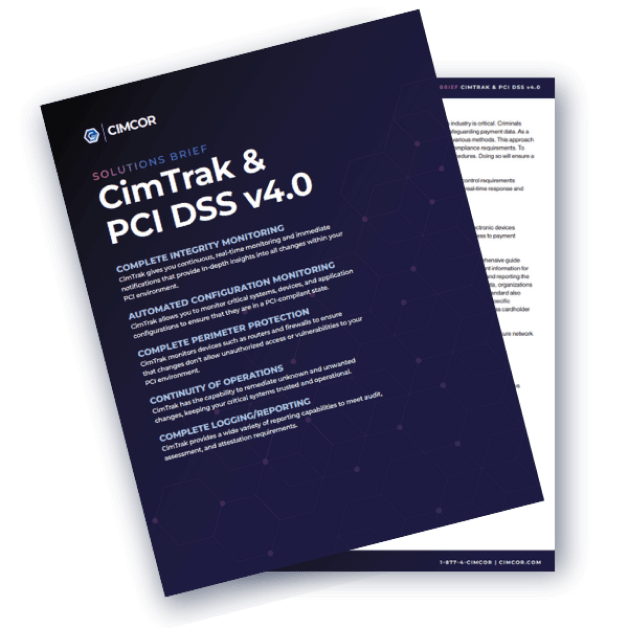If you're secure, are you compliant? If you're compliant, are you secure?
Compliance and cybersecurity go hand-in-hand. Cybersecurity compliance helps withhold a standard of security across all types of organizations to protect customer and company data. Whether you're a cybersecurity professional, business owner, or just interested in understanding compliance, let's cover the basics.
Security vs Compliance
Security is a culmination of the measures and processes your organization makes to defend your infrastructure against evolving cyber threats. Maintaining a robust cybersecurity strategy can consist of several things, from installing advanced tools to help with file integrity monitoring to conducting regular cybersecurity training throughout your organization.
On the surface, compliance in cybersecurity is a set of mandates for businesses to follow to ensure their cybersecurity efforts are up to snuff. Cybersecurity compliance standards are regulations set up by accredited agencies to improve security, minimize the effect of data breaches, and maintain trust for stakeholders across the board. Failure to comply with industry regulations and standards can lead to severe consequences like fines, legal penalties, and reputational damage.
While it seems daunting, compliance doesn't have to be complicated. The frameworks below are a few of the many well-known compliance frameworks organizations are required to follow.
It is important to note that this list is not exhaustive, and your business may be impacted by standards not listed here.
Top 5 Compliance Frameworks to Know
NIST 800-171
NIST special publication 800-171, aka the Defense Federal Acquisition Regulation (DFARS), deals with the unique risk when information is managed and controlled in non-federal systems and organizations where CUI (Controlled Unclassified Information) is processed, stored, or transmitted. The regulation aims to ensure the confidentiality, integrity, and availability of sensitive information.
NIST 800-171 outlines 14 control families and 110 controls designed to protect CUI and is not just limited to organizations that work with the government. Any organization that handles CUI must comply with this framework.
Related Read: NIST 800-171 Revision 3: Key Changes and Compliance Requirements.
If you're looking to comply with NIST 800-171, you will first want to perform an internal gap analysis to identify any areas of non-compliance and go from there. Maintaining proper cyber hygiene throughout your organization is another great place to start for NIST 800-171 and other regulatory requirements. The official NIST website offers additional resources and documentation to help further your organization's compliance efforts.
PCI-DSS
Created by the PCI Security Standards Council (PCI SSC), the Payment Card Industry Data Security Standard (PCI-DSS) is one of the most prominent compliance frameworks for businesses. All businesses that store, process, and/or transmit cardholder data must comply with the requirements. The level of compliance required for each business is dependent on the number of payment transactions handled per year.
The PCI-DSS framework consists of 12 requirements, each with its own sub-requirements. These requirements cover various aspects of network data protection and application security.
Related Read: When is PCI Required? (+ 4 Tips for Maintaining Compliance)
Achieving and maintaining compliance with PCI security standards is critical for businesses looking to safeguard their customers' data. Having the right tools in place can help you stay on top of unexpected changes within your infrastructure. In addition to having those tools in place, it is critical to prepare your front line—your employees—with the knowledge necessary to identify potential threats through ongoing training and security awareness programs.
HIPAA
Required by those in the healthcare industry, the Health Insurance Portability and Accountability Act of 1996 HIPAA) aims to protect the confidentiality, integrity, and availability of protected health information (PHI).
There are two main rules for HIPAA compliance. The Privacy Rule sets standards for how healthcare providers must protect the privacy of patient medical information. The Security Rule outlines administrative, physical, and technical safeguards organizations must implement to protect PHI.
Related Read: 5 Facts About File Integrity Monitoring and HIPAA Integrity Controls
If you need to comply with HIPAA requirements, conducting a risk assessment is a great place to start to help identify potential vulnerabilities in your IT environment. From there, you can determine what safeguards you need to implement to fortify your cybersecurity posture. Once you're in a HIPAA-compliant state, performing regular audits and monitoring your systems for unexpected changes or drifts will help maintain compliance.
CMMC
The Cybersecurity Maturity Model Certification (CMMC) is required for all organizations and contractors looking to do business with government agencies. The DoD created CMMC to strengthen cybersecurity among defense contractors and protect sensitive government information.
If you are striving to become CMMC certified, there are three levels of certification to review to see which one you require.
- Level 1 - Basic controls for essential cyber hygiene. This level applies to contractors that hold or process mildly sensitive content.
- Level 2 - A moderate standard of cyber hygiene, including all 110 NIST controls plus an additional 20 controls. This level applies to most DoD contractors that hold or process CUI.
- Level 3 - To be certified at level 3, contractors must have a fully mature cybersecurity function across all 43 capabilities.
For more information on achieving CMMC compliance, see CMMC Compliance Basics: 4 Steps to Success.
CIS Benchmarks
CIS Benchmarks are globally recognized standards used across all types of industries. These benchmarks create the baseline and best practices to help organizations 'harden' digital assets. While CIS Benchmarks aren't a requirement on their own, many other required frameworks (like PCI and HIPAA) use them as their baseline.
Related Read: CIS Benchmarks: 3 Critical Things To Know For Compliance
If your organization is looking to align with CIS Benchmarks perfectly, it's not possible to do so manually. With so many controls and configurations required, a manual process is inefficient for most organizations. Implementing an automated solution can make the process much faster and less resource-intensive to implement and maintain compliance.
Continuous Compliance Made Easy
Considering the state of the current cyber landscape, it is essential for organizations to achieve and maintain compliance with required frameworks to fortify the security of customer and company data. That said, you'll likely need to comply with multiple frameworks simultaneously, but it doesn't need to be complicated.
CimTrak helps organizations establish and maintain compliance with the regulatory benchmarks listed above and much more—all while improving your IT infrastructure's overall security and audit readiness.
To see how CimTrak can automate your compliance processes, download our Compliance Module Solution Brief or speak to one of our security experts for a customized demo.
Tags:
Compliance,
March 12, 2024




